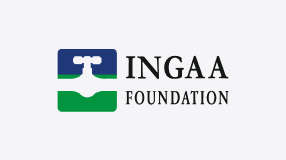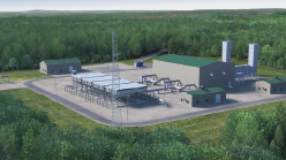Current Practices for Communicating with Emergency Responders
Background
In light of significant events in the natural gas pipeline industry, the Interstate Natural Gas Association of America, the INGAA Foundation and its members have seen the necessity for more effective communication and interaction with emergency response personnel. A 2011 INGAA filing with the Department of Transportation states that “while rare, pipeline incidents can have tragic consequences, including loss of life, injury or damage to property. Preventing incidents is the priority, but the importance of incident response, both planning and execution, and incident mitigation management (IMM) is self-evident.” There is no stakeholder more important in the planning and execution stages of public awareness and engagement programs than emergency responders. The hope is that through actively engaging the emergency response community, we can significantly improve emergency response. Emergency responders who are more familiar with pipeline operations and knowledgeable of response protocols to a pipeline emergency are better prepared to protect their communities, and, in turn, minimize the impact of an incident. Further, emergency responders who are cognizant of outside-force damage prevention (including 811, call before you dig) can serve as safety allies.
Engaging emergency responders is a challenging and important responsibility that pipeline companies face. Effective two-way communication to build and maintain relationships with emergency responders is an important goal for pipeline companies. So how do we develop a more robust working relationship? The industry continues to listen to what emergency responders are saying and is taking action to develop joint solutions with the emergency response community. One way to do this is to take the industry’s current practices and recommendations and incorporate them into company Incident Mitigation Management (IMM) plans. The purpose of IMM plans is to identify and take action to improve response and mitigation after an incident to minimize its impact, both in consequence and duration.
In order to achieve this goal of improved communication and coordination, pipeline companies must examine and learn from what has worked best for our peer pipeline operators and listen to what emergency responders are telling us. At the local level, pipeline operators should continue to take steps to observe the needs of public-sector first responders in their areas and tailor initiatives to meet those needs. By developing, practicing and effectively executing Incident Mitigation Management plans (IMM), pipeline companies better position themselves to prepare for and respond to emergency situations. By working together on a local level to acquaint responders with operators’ definitions of High Consequence Areas (HCAs) and identify other potential areas of consequence concern like critical infrastructure, emergency responders and company personnel become partners for pipeline safety in communities where they jointly live and operate.
Introduction
The Interstate Natural Gas Association of America (INGAA) is a trade association representing approximately two-thirds of the pipelines and over 65 percent of the mileage comprising the United States’ natural gas transmission pipeline system. INGAA’s 26 member companies operate approximately 200,000 miles of interstate transmission pipelines, delivering one-quarter of the nation’s energy. For INGAA and its members, pipeline safety is a core value. In December 2010, INGAA’s board of directors established a board-level task force to pursue further improvements in safety performance and to increase public confidence in the natural gas pipeline infrastructure. In March 2011, INGAA’s board of directors adopted its “Five Guiding Principles for Pipeline Safety.”
One of the “Five Guiding Principles for Pipeline Safety” is to engage stakeholders from the local community to the national level to help them understand their role in pipeline safety and participate in reducing risk and responding in the unlikely event of a pipeline emergency. One of the most critical of these stakeholders is the emergency response community. In order to more effectively respond to pipeline incidents, INGAA and its member companies have studied industry current practices and are making suggestions to improve communication with public sector first responders.
While pipeline incidents are low frequency, they can have high consequences. We as an industry understand and recognize the importance of preparing and communicating with emergency responders. Recent regulations and associated guidance documents, most specifically the American Petroleum Institute’s Recommended Practice 1162 (RP1162) V1, have addressed the need for operating companies to increase their public awareness efforts.
Conclusion
For the industry to improve the effectiveness of communication with emergency responders, companies must collaborate, but it is also incumbent upon the individual pipeline operator to develop its own program. By following the steps and Action List outlined below, pipeline operators will enhance the effectiveness of communication with emergency response personnel. The key action items outlined, incorporate tasks meant for industry representatives to pioneer as a group, as well as steps individual pipeline operators can take to enhance their programs.





